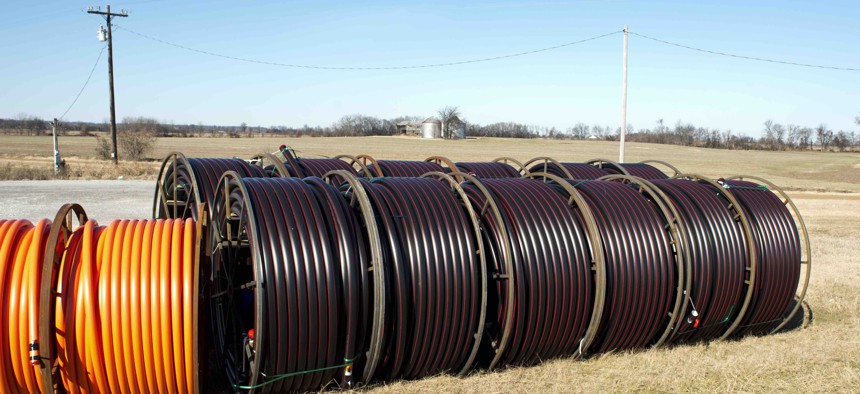The Role States Are Playing in Expanding Broadband Access

Shutterstock

Connecting state and local government leaders
New research offers a window into what states are doing to help get about 20 million Americans who now lack reliable, high-speed internet connected with the service.
State government efforts to help fund the expansion of broadband internet networks are relying on a mix of grants, loans and other programs that tend to focus on underserved areas and projects that complete “last mile” connections that link to homes and businesses.
That’s according to new research from The Pew Charitable Trusts that examines how states are supporting broadband projects. Pew has also released an interactive database that allows users to search, filter and sort state broadband policies across the U.S.
Pew has noted previously that about 21 million Americans lack access to reliable high-speed internet.
In a new brief, researchers with the nonprofit point out that some states, like Minnesota and North Carolina, have created specially designated funds to back broadband initiatives.
Ten states, meanwhile, have what are known as state universal service funds, supported by fees charged to telecommunications companies.
These pots of money originated in the era when the federal government and states were trying to ensure communities had access to telephone service. Subsequent changes to law in the 1990s allowed for the funds to go toward expanding internet connectivity.
In other cases states are turning to somewhat unique streams of revenue to pay for expanding broadband.
For example, the Pew brief notes that Indiana plans to use toll road revenues to fund a $100 million broadband program. And Illinois directs certain civil penalties that internet service providers pay into a “Digital Divide Elimination Fund.”
Devoting funding toward areas that lack access to high speed broadband, and to so-called last mile projects that connect homes and businesses, as opposed to infrastructure that functions as more of a mainline for networks, are two other state-level trends Pew highlights.
State broadband programs are happening along with federal and local initiatives.
The “farm bill” that President Trump signed last year, for instance, increased the annual authorization level for the U.S. Department of Agriculture's Rural Utilities Service broadband programs from $25 million to $350 million through 2023.
And in recent months, the Federal Communications Commission has pushed ahead with establishing what it’s calling the “Rural Digital Opportunity Fund,” which would direct up to about $20 billion over a decade to expand broadband in poorly served rural areas.
Money for the fund, however, is slated to be shifted from an existing broadband program that is set to expire next year—the Connect America Fund. And some observers have characterized the project as more of a rebranding than a new initiative.
Meanwhile, there’s action at the local level in places like San Jose, California.
The city is funneling fees wireless companies pay to install equipment on city utility poles into a “Digital Inclusion Fund,” which is expected to total about $24 million. The fund will help with expanding high-speed internet service for about 50,000 households, the city has said.
Not all state-level broadband programs have gone smoothly. A statewide project in Kentucky, known as KentuckyWired, has drawn scrutiny for going over budget and lagging behind schedule, and for how officials there have handled it.
Pew’s policy brief can be found here. And its interactive database of state broadband policies is here.
Bill Lucia is a Senior Reporter for Route Fifty and is based in Olympia, Washington.

NEXT STORY: Big idea for smart city IoT: Get small





